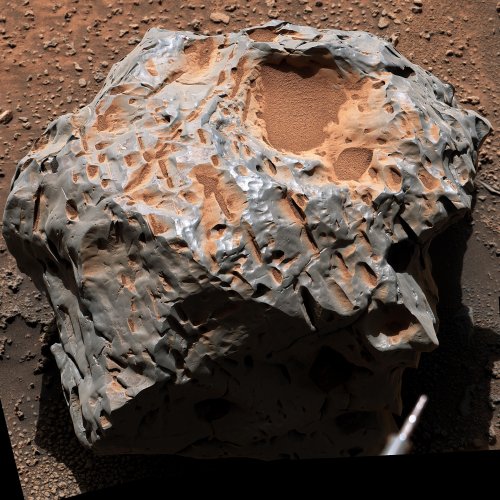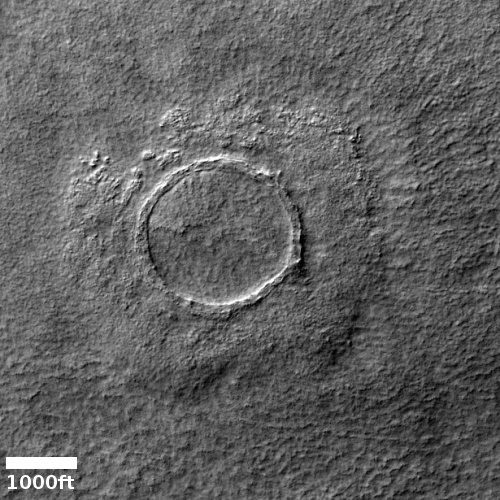Curiosity spots foot-wide meteorite on Mars
Curiosity appears to have identified a foot-wide rock on the surface of Mars that is likely a meteorite.
While the JPL press release at this link is certain this is a meteorite, the Curiosity science team is properly more circumspect:
The rock we are parked in front of is one of several very dark-colored blocks in this area which seem to have come from elsewhere, and we are calling “foreign stones.” Our investigations will help determine if this is a block from elsewhere on Mars that just has been weathered in an interesting way or if it is a meteorite.
The image to the right surely does look like a meteorite. If so, this would be one of the largest found so far on Mars by any rover.
Curiosity appears to have identified a foot-wide rock on the surface of Mars that is likely a meteorite.
While the JPL press release at this link is certain this is a meteorite, the Curiosity science team is properly more circumspect:
The rock we are parked in front of is one of several very dark-colored blocks in this area which seem to have come from elsewhere, and we are calling “foreign stones.” Our investigations will help determine if this is a block from elsewhere on Mars that just has been weathered in an interesting way or if it is a meteorite.
The image to the right surely does look like a meteorite. If so, this would be one of the largest found so far on Mars by any rover.










